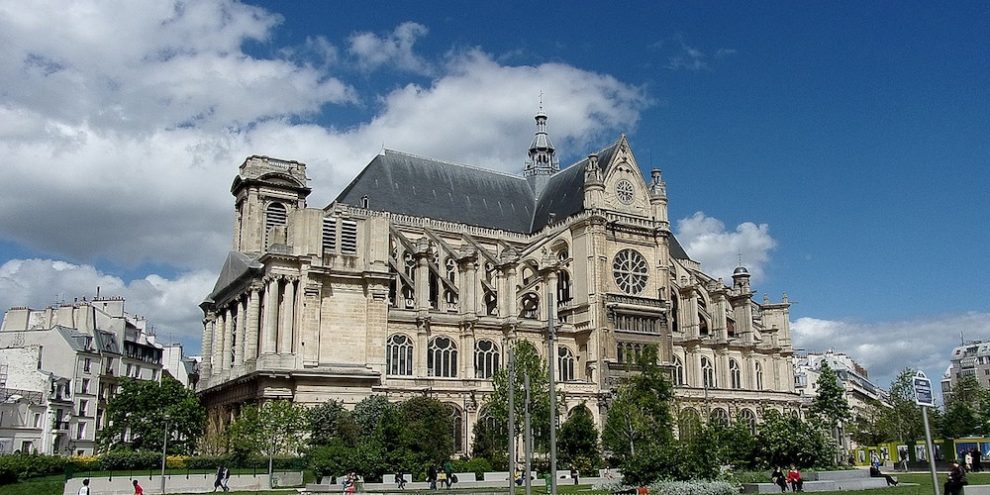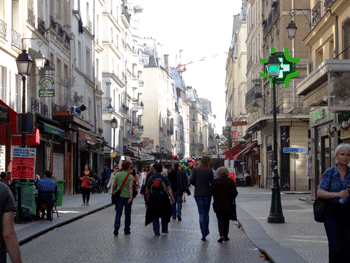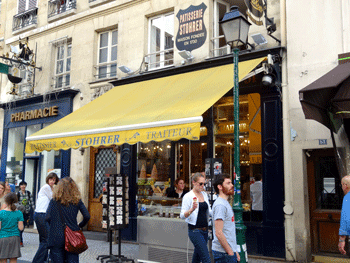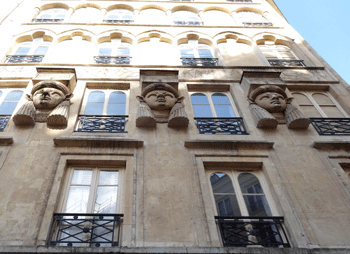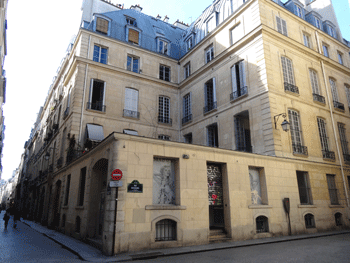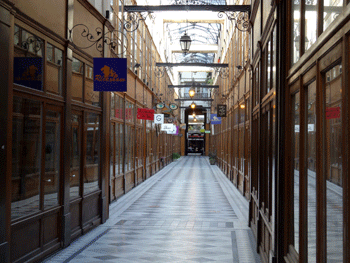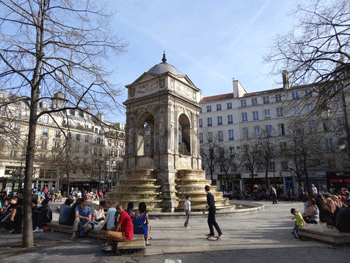THE WALK
Walking through the neighborhood of Montorgueil (2nd arrondissement), it is above all dive into the old and rich history of Les Halles, huge market that fed Paris and the Parisians for 8 centuries before leaving permanently to Rungis in 1969 .
Inseparable from les Halles, “Montorgueil” grew in accordance with the successive transformations of the market, making this area both a popular and modern district, atmosphere that you can still feel today.
This walk will take you so into the history of this neighborhood, one of the oldest in Paris, exploring its various developments. You’ll also enjoy the currently pleasant atmosphere of pedestrian village full of shops and restaurants.
THE ITINERARY
- Start the walk at St. Eustache Church. Built in the early 16th century on the site of a small chapel to accommodate a population increasingly important, this beautiful church is a mixture of Gothic and Renaissance styles.
- The large dome that you see from the entrance of the church is the former wheat market (trading flour, barley, oats, beans, etc …), today « Bourse de Commerce » (trading exchange).
Unending place of changing, Les Halles are until 2015, again, renovated.
- Go next rue Montorgueil. This pedestrian street is the commercial heart of the neighborhood, and some stores are part of the oldest in Paris. At the n° 38 for example is “L’Escargot Montorgueil » favorite kitchen in the 20th century of Guitry, Proust, Dali … By the way, the ceiling of the entrance was Sarah Bernhardt dining room’ one she gave to the restaurant before her death !
- Continue straight on. Crossing the rue Etienne Marcel, you go outside of the Paris of the 13th century, when the city was protected by the « Philippe Auguste wall », only surrounding wall remains still visible in Paris (one is 20 rue Etienne Marcel : la Tour Jean Sans-Peur).
- At 51 rue Montorgueil is the Bakery « Stohrer », the oldest patisserie in Paris. Stohrer was the pastry chef of Marie Leszczynska, wife of King Louis XV (1710-1774).
- In front of the pastry is the rue Marie Stuart. King Saint-Louis (1214 – 1270) promulgated in 1256 a law prohibiting prostitution within the city, pushing the prostitutes outside the walls. In the district of Les Halles, many will go rue Marie Stuart and rue Dussoubs, then called rue Gratte-Cul (« itchy-ass street ») and rue Tire-Boudin (screw-ugly-lady street) !
- Continue straight ahead until the end of rue Montorgueil.
- Rue d’Aboukir, turn right and walk as far as place du Caire. Here was the most important « Cour des Miracles » in Paris (among the dozen of the city), place in Paris were the tramps and thieves and disabled people got together and somewhat lived.
- The name « Cour des Miracles » (courtyard of miracles) has been given because at night, or pursued by the police, the disabled people found back, as if by magic, all their physical abilities….
- Note at the n° 2 the Egyptian amazing front of the building.
- Take rue du Caire then turn right rue Dussoubs. At n°23, the Mansion was one of the most famous brothel of the 18th century. Here was « practising » the Comtesse du Barry before becoming the scandalous mistress of King Louis XV.
- Continue straight to the Passage du Grand Cerf, very nice little covered passage of Paris (closed Sunday).
- At the end of the passage, you get rue Saint-Denis, another main street of Montorgueil district. Turn right and walk down rue Saint-Denis to the place Joachim du Bellay, rather commonly known as « Place des Innocents ».
- Walking to this place and further, you will come across many street with names of trades. They get their names from new streets created in 1553 around Les Halles to welcome new merchants. Thus, each street was given the name of the new business.
- Rue des prêcheurs (preachers street), rue aux Ours (“Ours”= “bear”, was in fact “Oies” = “Goose”), rue de la Cossonnerie (poultry and game market in the Middle Ages). Further, you will also find rue de la Verrerie (glassware street), rue de la ferronnerie (ironwork Street) or rue des Lombards (pawnbrokers and bankers).
- Place des Innocents was the cemetery of Les Halles. After a macabre collapse in 1780, it was decided that cemeteries will be outside of the city (hence the construction of the Pere Lachaise, Montmartre and Montparnasse cemeteries). All bones of the cemetery were moved into an underground quarry, now the catacombs of Paris.
- End the walk at the level of 6, rue de la Ferronnerie (nearby “café Coeur Couronné”). You can see on the ground a memorial stone. Indeed, here as been killed King Henri IV on May 14th of 1610.
If you want to continue your discovery, see our walking tour of the “old” Paris.

